The Noncommissioned Officer Candidate Course (NCOCC)
At the time of my initial 1999 research in to
the Skill Development Base Program in 1999
little had been written on the story of not only
this revolutionary new way to develop
sergeants for combat, but the men who were
chosen for training for that singular purpose.
Since that time there were at least 3 books
written, including my monograph Educating
Noncommissioned Officers (of which this is
based on), yet the stories continue to be told.
Even among the attendees or the soldiers of
that period, little is known beyond anecdotes,
rumors or lore.
-CSM (Ret.) Dan Elder, Curator
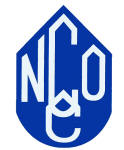
Download the document here.
Prologue – Studying the Effects
of NCO Training
In 1957 the U.S. Continental Army Command
(CONARC) and the U.S. Army Leadership
Human Research Unit (with support from the
George Washington University) began to
study the feasibility of identifying and
training enlisted soldiers in the event of
hostilities to perform in leadership roles.
Long-recognized that the NCO was important
to the smooth operation of the Army, there
had been relatively little research conducted
on improving their training. Task NCO was
thus born, with the goal of determining how
to identify and train enlisted soldiers as
NCOs. Parallel research programs were
begun, with the Human Resources Research Office (HumRRO) of George Washington
University developing initial psychological
predictors of leadership potential and the
evaluation system for use in identifying
competent leaders for senior NCO positions.
The U.S. Army Personnel Research Office
(USAPRO) had the mission of developing
techniques to identify early in the careers of
those enlisted men who were capable of
becoming good noncommissioned officers in
the combat branches.
The Army Noncommissioned Officer’s
Academy system was selected to serve as the
framework to measure leadership
performance. The commander of the U.S.
Constabulary force in Europe Maj. Gen. Isaac
D. White decided late in 1949 that special
training was needed for the noncommissioned
officers of the Constabulary. He turned to the
commander of the 2nd Constabulary Brigade
Brig. Gen Bruce C. Clarke, who expressed his
enthusiasm about the project. White gave him
the mission of organizing a
Noncommissioned Officer Academy in
unused buildings at Jensen Barracks in
Munich, of which he was to also serve as the
Academy’s Commandant. White explained
what he wanted of the curriculum and stated
it would be run on a strict military basis. It
was to be purely academic classroom
instruction, not hands-on training. Clarke set
up a six weeks course with White’s approval,
and in September 1949 the Constabulary
Noncommissioned Officer Academy was
established. In later years, Clarke would
consider the NCO Academy to be one of the
most successful activities he had been
charged with in his illustrious career.
Initially, the HumRRO project was to study the effects of academy training on
noncommissioned officers job performance
and to study the factors that modify effects of
academy training. But at the urging of the
CONARC Human Research Advisory
Committee, HumRRO ultimately settled on a
three-phase study. According to CONARC
they believed that in a future mobilization that
“the need for enlisted leaders would far
exceed the number available from both the
active Army,” and that the need for NCOs so
pressing that they might be required to
“appoint leaders before their ability could
actually be proved on the battlefield.” One of
the early results of the study was the
publishing of the USCONARC Pamphlet
350-24, Guide for the Potential
Noncommissioned Officer, which was a howto guide for candidates to smooth the
transition for enlisted soldiers from within the
ranks to a sergeant.
In June 1961 Russia demanded the
withdrawal of western forces from the
German capital of Berlin and then started
constructing a wall to divide the city. In the
midst of those studies and field experiments
the Army and the Department of Defense was
faced with a possible call for mobilization as
a result of the Berlin Crisis. HumRRO
suggested that a two-week Leader Preparation
Course (LPC) between Basic and Advanced
training be instituted. The goals were to
provide support to the training cadre at
advanced training sites and centers, and
provide these leader trainees with supervisory
and human relations skills. In October, the
Leader Preparation Program (LPP) was
implemented at Forts Dix, Knox, Gordon,
Jackson, Carson, and Ord. In 1963 a oneweek Leader Orientation Course was provided to the Women’s Army Corps, to be
conducted one-week before basic training.
The LPP was based on a four- week LPC and
consisted of training programs and
observations. As to be expected for a program
of this type, there was resistance from the
“old soldiers.” The researchers noted that at
each training center they had to contact and
persuade approximately 30 officers and 100
NCOs to adjust their procedures, and to
convince them the system would work.
A series of pilot studies was conducted to
examine the problems of junior NCO
selection, prediction and evaluation of new
recruits. Informal leadership training was
conducted using different approaches and
techniques, and by the completion of the
study three experimental training systems
were developed. The 1967 conclusions drawn
up at the close of the10-year study were that:
Leadership Selection. The candidate
for leadership training should be above
average on BCT (basic training) Peer
Ratings and on the appropriate
Aptitude Area score. Supervisors’
evaluations should be used to eliminate
men who are obvious misfits or to
recommend men who are outstanding
prospects in the opinions of the cadre
despite poor aptitude scores or low
Peer Ratings.
Leadership Training. The
experimental training methods led to
better leadership indications on nearly
all criteria, with the Leader Preparation
Course system exhibiting greatest
effectiveness and feasibility among
various experimental and control
conditions tested.
Training Method. Relatively little
criterion difference was found between
results from specific training methods
(i.e., functional context versus
traditional; high cost versus low cost).
However, because the time involved in
presentation of each different method
varied, definitive comparisons could
not be made.
The CONARC-sponsored Unit NCO project
was directly influential on important changes
to the way the Army trained initial entry
soldiers. In 1963, Stephen Ailes, then
Secretary of the Army, made a
comprehensive survey of recruit training in
the Army. The Ailes Report recommended
establishment of schools that would offer
formal instruction to trainers newly assigned
to duty at Army Training Centers. The project
was organized at Fort Jackson during the
period 1 February-17 April 1964. CONARC
developed a new concept to transfer
responsibility from training committees to the
platoon sergeant. Technical advisory in the
development of the “Drill Sergeant” was
provided by the Work Unit and the LPP
served as the model for the Drill Sergeant
Program and in developing the Drill Sergeant
Course, first conducted at Fort Jackson.
The Noncommissioned Officer’s
Candidate Course
As the war in Vietnam had progressed, the attrition of combat, the 12-month tour limit in
Vietnam, separations of senior
noncommissioned officers and the 25-month
stateside stabilization policy began to take its
toll on the ranks of enlisted leaders to the
point of crisis. Without a call up of the
reserve forces, Vietnam became the Regular
Army’s war, fought by junior leaders. The
Army was faced with sending career noncoms
back into action sooner or filling the ranks
with the most senior PFC or specialist. Field
commanders were challenged with
understaffed vacancies at base camps, filling
various key leadership positions, and
providing for replacements. Older and more
experienced NCOs, some World War II
veterans, were strained by the physical
requirements of the methods of jungle
fighting. The Army was quickly running out
of noncommissioned officers in the combat
specialties.
In order to meet these unprecedented
requirements for NCO leaders the Army
developed a solution called Skilled
Development Base (SDB) Program on the
proven Officer Candidate Course where an
enlisted man could attend basic and advanced
training, and if recommended or applied for,
filled out an application and attended OCS.
The thought by some was that the same could
be done for noncoms. If a carefully selected
soldier can be given 23 weeks of intensive
training that would qualify him to lead a
platoon, then others can be trained to lead
squads and fire teams in the same amount of
time. From this seed the Noncommissioned
Officers Candidate Course (NCOC) was born.
Potential candidates were selected from
groups of initial entry soldiers who had a
security clearance of confidential, an infantry score of 100 or over and demonstrated
leadership potential. Based on
recommendations, the unit commander would
select potential NCOs, but all were not
volunteers. Those selected to attend NCOC
were immediately made corporals and later
promoted to sergeant upon graduation from
phase one. The select few who graduated with
honors would be promoted to staff sergeant.
The outstanding graduate of the first class,
Staff Sgt. Melvin C. Leverick, recalled “I
think that those who graduated [from the
NCOC] were much better prepared for some
of the problems that would arise in Vietnam.”
The NCO candidate course was designed to
maximize the two-year tour of the enlisted
draftee. The Army Chief of Staff Gen. Harold
K. Johnson approved the concept on June 22,
1967, and on September 5 the first course at
Fort Benning, GA began with Sgt. Maj. Don
Wright serving as the first NCOC
Commandant. By combining the amount of
time it took to attend basic and advanced
training, including leave and travel time, and
then add a 12-month tour in Vietnam, the
developers settled on a 21-22 week course.
NCOC was divided into two phases. Phase I
was 12 weeks of intensive, hands-on training,
broken down into three basic phases. For the
Infantry noncom, the course included tasks
such as physical training, hand-to-hand
combat, weapons, first aid, map reading,
communications, and indirect fire. Vietnam
veterans or Rangers taught many of the
classes, but the cadre of the first course was
commissioned officers. The second basic
phase focused on instruction of fire team,
squad and platoon tactics. Though over 300
hours of instruction was given, 80-percent
was conducted in the field. The final basic phase was a “dress rehearsal for Vietnam,” a
full week of patrols, ambush, defensive
perimeters, and navigation. Twice daily the
Vietnam-schooled Rangers critiqued the
candidates and all training was conducted
tactically.
Throughout the 12-weeks of training,
leadership was instilled in all that the students
would do. A student chain of command was
set up and “Tactical NCOs” supervised the
daily performance of the candidates. By the
time the students successfully completed
Phase I, they were promoted to sergeant or
staff sergeant, and shipped off to conduct a 9-
10 week practical application of their
leadership skills by serving as assistant
leaders in a training center or unit. This gave
the candidate the opportunity to gain more
confidence in leading soldiers. As with many
programs of its time, NCOC was originally
developed to meet the needs of the combat
arms. With the success of the course, it was
extended to other career fields, and the
program became known as the Skill
Development Base Program. The Armored
School began NCOC on December 5, 1967.
Some schools later offered a correspondence
“preparatory course” for those who
anticipated attending NCOC or had not
benefited from such formal military
schooling.
As with the Leadership Preparation Course
tested by HumRRO, the “regular” noncoms
and soldiers had much resentment for the
NCOC graduates, as those who took 4-6 years
to earn their stripes the hard way, were
immediately angered. Old-time sergeants
began to use terms like “Shake ‘n’ Bake,”
Instant NCO,” or “Whip-n-Chills” to identify this new type on noncom. Many complained
by voice or in writing that it took years to
build a noncommissioned officer and that the
program was wrong. Many feared it would
affect their promotion opportunities, and one
senior NCO worried that “nobody had shown
them [NCOC graduates] how to keep floor
buffers operational in garrison.” William O.
Wooldridge, serving as the recently
established position of Sergeant Major of the
Army stated that, “promotions given to men
who complete the course will not directly
affect the promotion possibilities of other
deserving soldiers in Vietnam or other parts
of the world.” In his speech to the first
graduating class Wooldridge said that, “Great
things are expected from you. Besides being
the first class, you are also the first group who
has ever been trained this way. It has been a
whole new idea in training.” As Wooldridge
expressed, all were not suspicious of this new
way to train NCOs. After initial skepticism,
outgoing battalion commander of 2d Bn, 27th
Infantry Lt. Col. Winfried. G. Skelton was
asked how he though NCO Candidate Course
graduates performed in combat, to which he
replied, “within a short time they [NCOC
graduates] proved themselves completely and
we were crying for more. Because of their
training, they repeatedly surpassed the soldier
who had risen from the ranks in combat and
provided the quality of leadership at the squad
and platoon level which is essential in the
type of fighting we are doing.”
The graduates recognized the value of their
training. Young draftees attending initial
training at the time knew they were destined
for Vietnam. Many potential candidates were
eligible for Officer Candidate School, but
rejected it because they would incur an additional service obligation. They realized
that NCOC was a method by which they
could expand on their military training before
entering the war. Some were exposed to the
Phase II NCO Candidates serving as TAC
NCOs during their initial training and felt
they could do the same. Many graduates
would later say that the NCO Candidate
Course, taught by Vietnam veterans who
experienced the war first hand, was what kept
them and their soldiers alive and its lessons
would go on to serve them well later in life.
Many were assigned as assistant fire team
leaders upon arrival in Vietnam and then
rapidly advanced to squad or platoon
sergeants. Most would not see their fellow
classmates again, and in many cases were the
senior (or only) NCO in the platoon. Some
would go on to make a career of the military
or later attend OCS, and four were Medal of
Honor winners. In the end over 26,000
soldiers were graduates of one of the NCO
Candidate Courses.
The NCOC graduate had a specific role in the
Army-they were trained to do one thing in
one branch in one place in the world, and that
was to be a fire team leader in Vietnam. It
was recognized that they were not taught how
to teach drill and ceremonies, inspect a
barracks, or how to conduct police call. Many
rated the program by how the graduates
performed in garrison, for which they had
little skill. But their performance in the rice
paddies and jungles as combat leaders was
where they took their final tests, of which
many receiving the ultimate failing grade. But
educating NCOs and potential NCOs was
firmly in place for the Army.
Epilouge
The call was out in the Army to educate
noncommissioned officers. In 1963 a council
of senior NCOs at Fort Dix called for a senior
NCO college, and one of the main topics was
NCO education in November 1966 during
SMA Wooldridge’s first Command Sergeants
Major Conference. The Army began to look
at educating noncoms in earnest. On August
17, 1965, the Chief of Staff of the Army
directed a comprehensive Enlisted Grade
Structure Study. This study, which was
completed in July 1967, focused on how to
establish and manage a quality-based enlisted
force, and dedicated a portion for “improving
the vital area of training.” In response, the
Deputy Chief of Staff for Personnel
developed a comprehensive 5-year plan to
manage career enlisted soldiers which
included many far reaching programs, such as
career management fields, MOS
reclassification, the Qualitative Management
Program, and Force Renewal through NCO
Educational Development.
The Project recommended formal leadership
training designed to prepare selected careerenlisted personnel for progressive levels of
duty, and noted it would enhance career
attractiveness and the quality of the
noncommissioned officer. This study
recognized that “The present haphazard
system of career development, as opposed to
skill development, had two bad results. First, the image of the NCO as a professional,
highly trained individual is difficult to foster;
second, the Army’s resource of intelligent
enlisted men, anxious to develop as career
soldiers, is inefficiently managed. The Army
has extended great effort to ensure the
selected development of its officers.
Analagous [sic] effort should be spent in the
development of the noncommissioned
officers of the Army.”
The report went on to recommend a threelevel educational program, similar to officers,
outlined in the February 1969 NCO
Educational Development Concept. The first
of the three levels consisted of the Basic
Course which was designated to produce the
basic E-5 NCO. The Advanced Course was
targeted to mid-grade NCOs, and the Senior
Course was envisioned as a management
course directed to qualifying men for senior
enlisted staff positions. The Skill
Development Base Program, NCOC, was
selected to serve as the model for the Basic
Course. Project Proficiency, to be now known
as the NCO Education System (NCOES), was
to become a reality.
On the 23rd of April 1970, President Richard
Nixon announced to Congress that a new
national objective would be set to establish an
all-volunteer force and from that the Modern
Volunteer Army was born. But by mid-1971
Army Chief of Staff General William
Westmoreland was unhappy with the progress
of the MVA and asked then retired Bruce
Clarke to travel the Army and find out what
could be changed to make it more attractive.
On a visit to Fort Hood, Clarke arrived in
time for its NCO Academy to close its doors,
a repeat of the same story at other installations. Clarke conducted a survey and
discovered that there were only four NCO
Academies remaining in which to train
100,000 noncommissioned officers. In his
report back to Westmoreland, Clarke
lamented that “we are running an army with
95% of the NCO’s untrained!” NCO
academies across the nation were reopened,
and Westmoreland approved the Basic and
Advance noncommissioned officer courses,
and by July the first Basic course pilot began.
Some of the difficulties facing the Army of
1971 included Westmoreland’s concern for
leadership inadequacies. He directed the
CONARC Commander to form a study on
leadership, and noted “the evident need for
immediate attention by the chain of command
to improving our leadership techniques to
meet the Army’s current challenges.” He also
directed the War College in Carlisle,
Pennsylvania to determine the type of
leadership that would be appropriate as the
Army approached the end of the draft. While
these studies were going on, the Army was
continually under fire. The May 1971 release
of Comptroller General’s Report to Congress
on the Improper Use of Enlisted Personnel
noted that the Secretary of the Army should
strengthen existing policies rather than
introduce new programs or changes. That
same month Westmoreland urged all the
commanders of the major commands to grant
their noncommissioned officers broader
authority. In his list of 14 points he asked
them to “expand NCOs education through
wise counseling and by affording them the
opportunity to attend NCO Academies, NCO
refresher courses, and off-duty educational
programs.”
NCOC seeds Army NCO
Education System
Planning for the development of an education
system for enlisted leaders of the Modern
Volunteer Army began in early 1969.
Obviously, if the NCO could be schooltrained for the jungle, then they ought to be
school-trained for the garrison, too.
Westmoreland had intended to establish a
senior NCO school in 1968, but CONARC
commander Gen. James K. Woolnough was
not enthusiastic about the plan. Woolnough
believed that senior NCOs, like generals,
needed no further military schooling. This
was the same problem Gen. Johnson was
earlier faced with while trying to establish the
NCO Candidate Course when CONARC
commander Gen. Paul A. Freeman and his
headquarters would not accept the idea.
Johnson opted to wait until Woolnough
assumed command of CONARC to begin the
NCO candidate program. Westmoreland
would also wait until Gen. Ralph E. Haines
Jr. succeeded Woolnough at CONARC for
the senior NCO school.
In July of 1970, during a lull in the NCO
Candidate classes at Fort Sill, they conducted
the first pilot of the Noncommissioned
Officer Basic Course. The NCO Education
Program could only begin when NCOC
Candidate Courses were completed because
of scarce resources…and the first of the
Army-wide courses began in May 1971. In January of 1972 the first two
Noncommissioned Officer Advance Courses
began and that same year Chief of Staff Gen.
Creighton Abrams approved the
establishment of the Senior NCO Course, to
be located at the newly established Sergeants
Major Academy at an unused airfield in El
Paso, Texas. The draft ended on December
31, 1972 and the Army entered 1973 prepared
to rely on volunteers.
The three-tiered noncommissioned officer
education system was initially developed for
career soldiers, specifically for those who had
re-enlisted at least once. Students would
attend the courses in a temporary duty status,
with the sergeants major course being a
permanent change of station. NCOES was
established in late 1971 and phased in across
the Army. Funding was a problem,
particularly with overseas soldiers and by
December 1971 CONARC had to cancel 9 of
12 Basic Course classes because of poor
attendance. CONARC convened a NCOES
conference in October and implemented
incentives including promoting the top
graduates, offering promotion points to
graduates and mandatory quotas by
CONARC. Reserve soldiers were authorized
to attend active courses, and different
branches developed correspondence courses.
In January 1972 the first two advance courses
started, consisting only of E-7s because the
Department of the Army did not maintain the
files of E-6s to screen. By 1974, forty-two
courses had been established through
CONARC, and in August U.S. Army Europe
personnel were allowed to attend advance
courses in the United States.
Dedicated to:
- SSG Robert J. Pruden, Class 2-69
- SSG Hammett Lee Bowen, Jr., Class 4-69
- SSG Robert C. Murray, Class 38-69
- SGT Lester R. Stone, Jr. Class 37-68
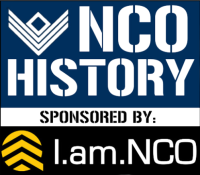


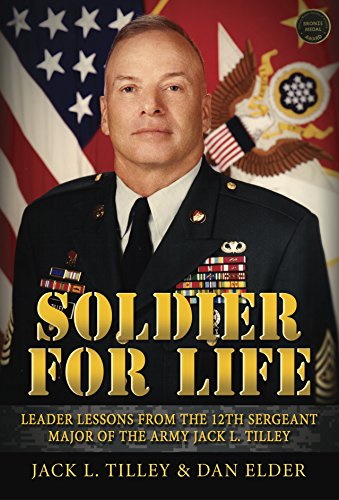
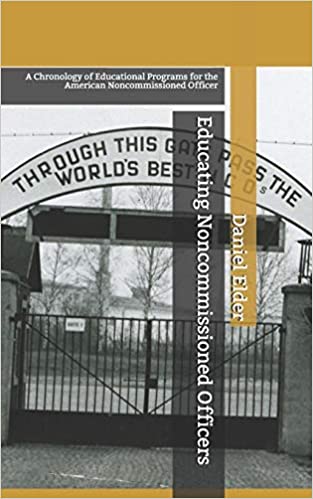
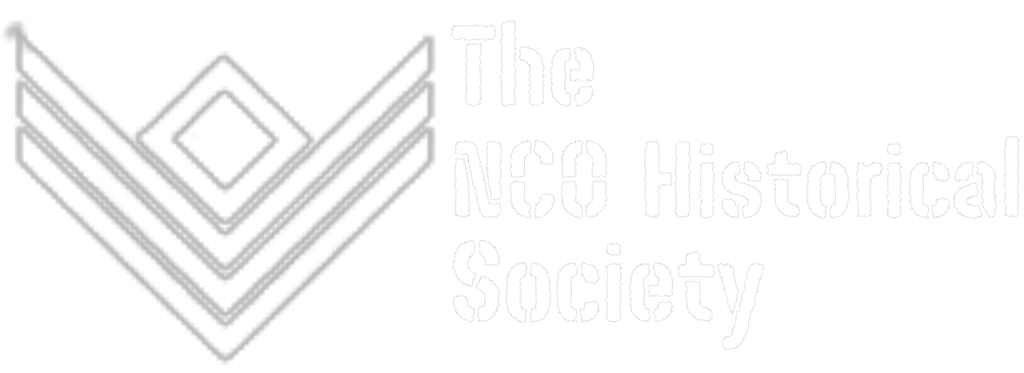
One Response
I am the photo editor for Vietnam magazine and I’m very interested in images to help illustrate a feature about the Shake and Bake program. Please contact me as soon as is possible.
Thank You
Guy